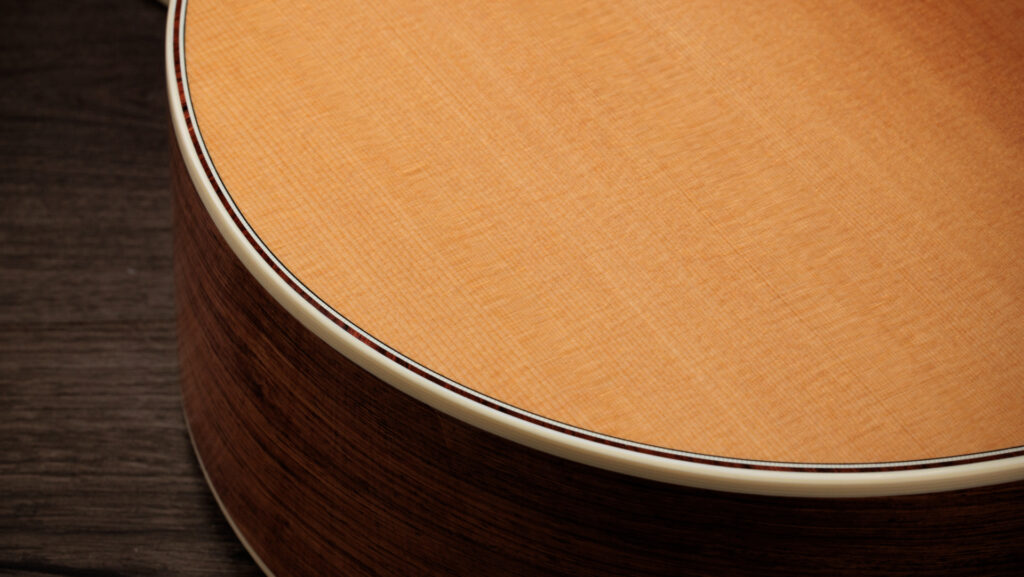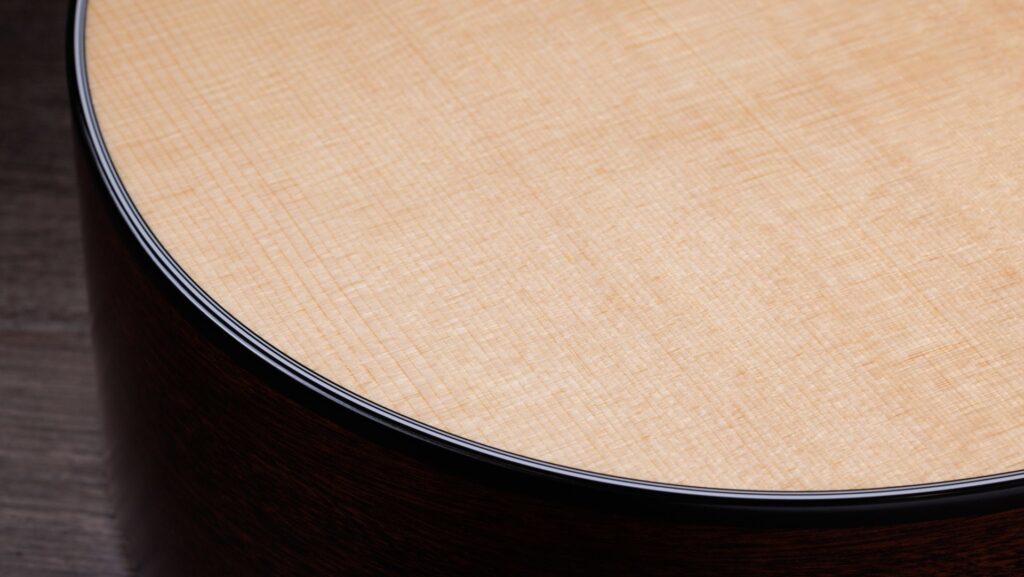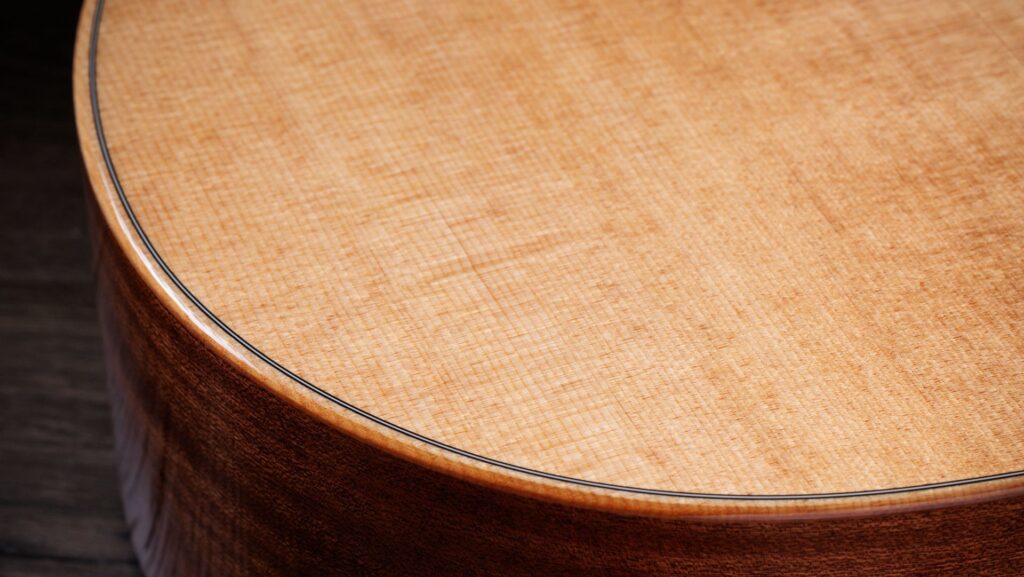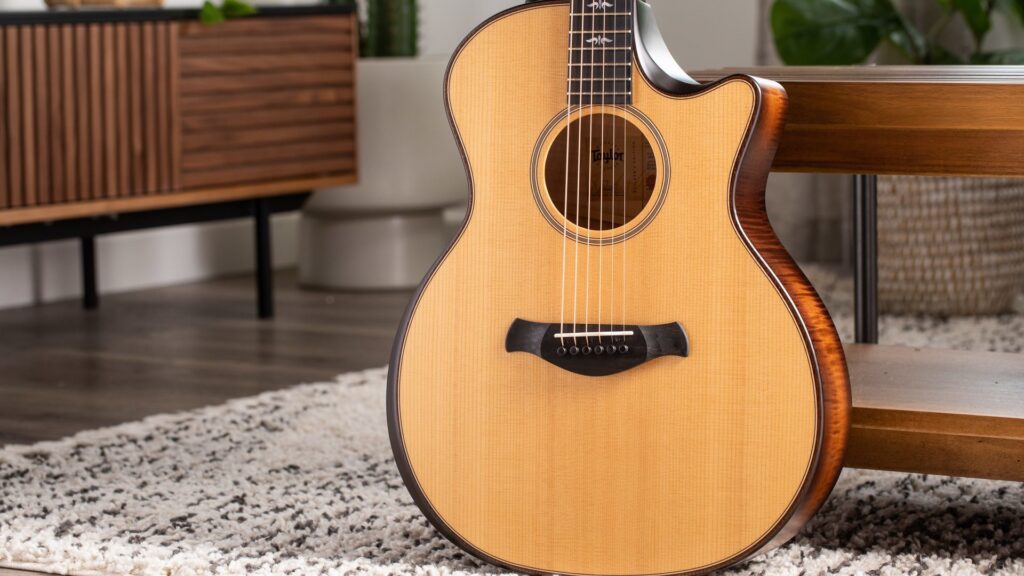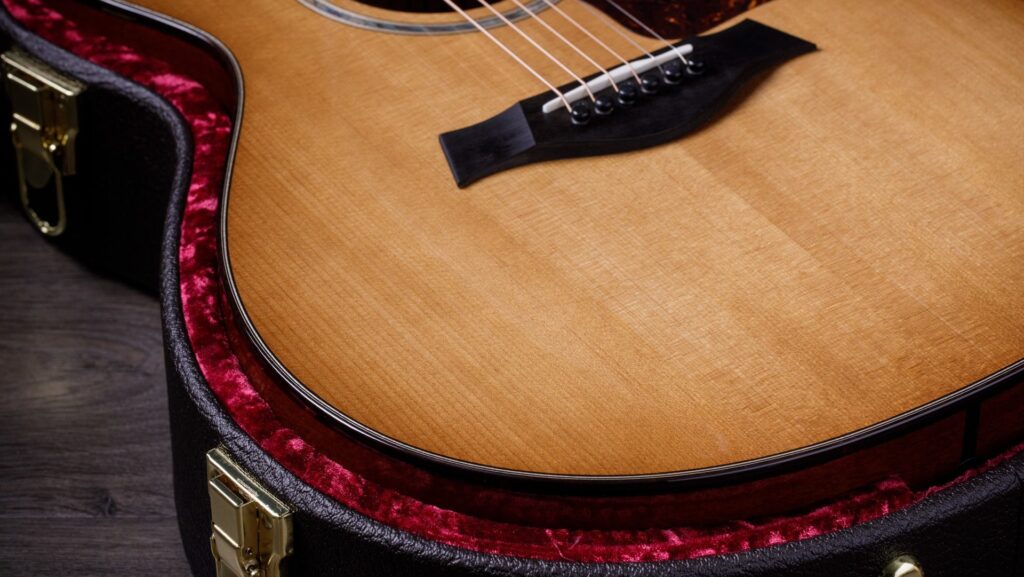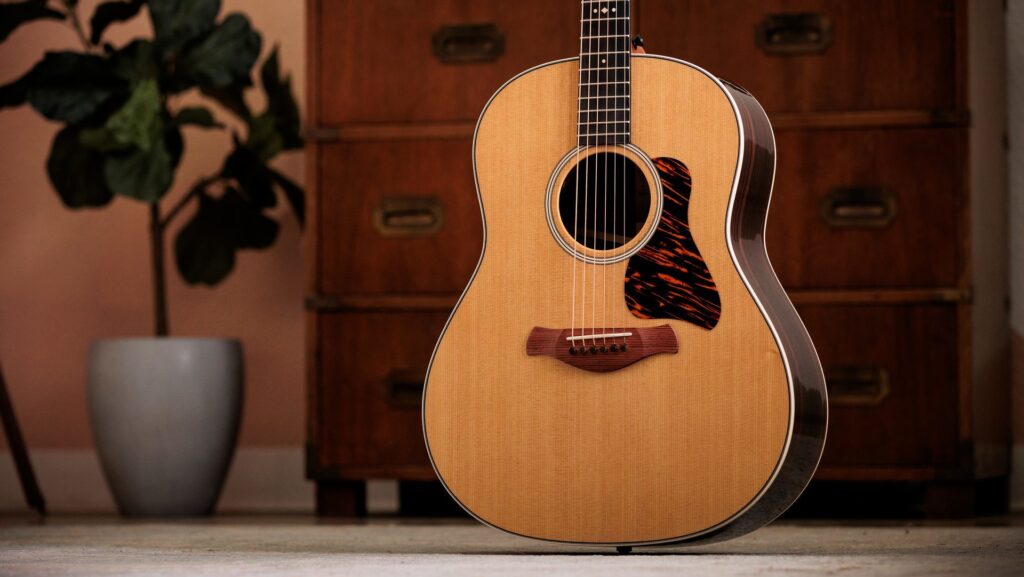For players chasing the warmth and sweetness of a played-in, aged acoustic guitar, torrefied tops offer a compelling way to get closer to that tone right out of the box. At Taylor Guitars, we refer to torrefaction as part of a broader category known as thermal modification—a term that captures the range of relatively high-temperature processes used to alter the molecular structure of wood. We’ve refined our signature torrefaction process to bring out a richer, more complex tone from spruce while also improving its structural and environmental performance—one that maintains the clarity, volume and balance players expect from our instruments, with added depth and responsiveness.
Below, we break down what torrefaction is, how tone is affected by torrefaction’s impact on the tonewood at a structural level, and how Taylor’s torrefaction process is unique.
What is torrefaction?
Originally used by the Vikings of Scandinavia to strengthen the wood used in their longships and developed in the 1930s in the Netherlands to increase wood durability for outdoor use, torrefaction has since found new life in the world of musical instruments. Torrefaction is a thermal process in which wood is roasted in a controlled, low-oxygen environment. The goal is to simulate certain chemical and structural changes that naturally occur in wood over decades of aging and use, such as oxidation, molecular crystallization, and loss of resins and moisture.
“You’re basically subjecting a piece of wood to the same chemical process as a lump of dough that when baked becomes bread,” says Andy Powers, Taylor’s chief guitar designer.
While some manufacturers have experimented with roasting a variety of tonewoods, spruce—the most common wood used for acoustic guitar soundboards—is also the most commonly torrefied.
During torrefaction, spruce tops are placed in ovens. The wood is heated to a precise temperature, just high enough to alter its internal chemistry without burning or compromising structural integrity. Color can be a clue to the effectiveness of the treatment. While roasting adds a naturally darker visual hue, the color isn’t the primary goal—it’s a byproduct of the wood being “done just right.” Andy compares it to baking: “If you like cookies soft and chewy, they still look almost like dough. And if you burn that thing into a cracker, it’s going to be brittle.” In his experience, Andy has found that his preferred hue tends to match up with the right mechanical behavior and a mature, aged sonic character.
How does torrefaction affect the sound of a guitar?
Torrefaction brings out a warmer, sweeter and more seasoned character in spruce, reminiscent of a guitar that has opened up naturally with play over time. These enhancements mirror the tonal traits that typically emerge as the tonewood ages. A torrefied top responds more readily to a player’s touch, offering a sense that the wood “comes alive” as it vibrates. Notes bloom more easily. Harmonics sound fuller and more developed.
“A new piece of wood has quite a bit of resistance to moving,” says Andy Powers. “It’s not used to vibrating at a high frequency like that. An aged or played-in top is just waiting to be set in motion. To a player, it feels like the notes are just falling out of the guitar. As soon as you touch the strings, it takes hardly any effort; it doesn’t feel like you have to pry the sound out.”
Chief guitar designer Andy Powers discusses how Taylor’s special roasting process enhances the sonic richness and responsiveness of a guitar.
What makes this tonal shift so appealing is that it doesn’t come at the expense of the spruce’s inherent strengths. Clarity, articulation and projection are undiminished.
What’s the science behind the torrefaction process?
Wood is composed of three main parts: hemicellulose, cellulose and lignin. Think of the cellulose as the sturdy framework or scaffolding that gives it structure, hemicellulose as the puffy filler in between the cellulose fibers, and lignin as the tough glue or armor that reinforces and waterproofs the whole system.
During the normal aging process, as a piece of wood experiences different cycles of humidity and dryness, part of the hemicellulose is gradually lost and slowly crystallizes. On an acoustic guitar, this molecular change will cause the wood to become more resonant, which produces the sound that we describe as “played-in.”
At the cellular level, torrefaction accelerates chemical and physical changes inside the wood associated as it’s heated in a low-oxygen environment:
- Moisture and natural oils are removed, reducing the wood’s ability to absorb water and making it more dimensionally stable.
- Cellulose becomes more crystalline and rigid, increasing the soundboard’s longitudinal and radial stiffness and making it more responsive.
- Sugars in the wood begin to caramelize or crystallize, mimicking the chemical aging that occurs over time with natural oxidation and vibration.
- Hemicellulose, a sugar-rich component of the cell wall, begins to break down, contributing to weight loss while lowering damping and improving resonance.
Together, these changes result in a lighter, stiffer and more acoustically efficient soundboard that responds more immediately to string energy, creating that warm, open tone many players associate with vintage instruments. Spruce responds especially well to torrefaction due to how its internal lignin redistributes under heat, enhancing stiffness and reducing internal damping for greater tonal clarity.
How is Taylor’s torrefaction process different?
Torrefaction is one of the many ways Taylor brings innovation to traditional tonewoods. In typical Taylor style, we’ve developed our own signature recipe for torrefying spruce. The process happens before the tops are joined to guitar bodies, giving us the ability to carefully inspect and select each roasted top based on tonal potential and aesthetic character.
Get a behind-the-scenes look at how Taylor Guitars roasts spruce tops at our El Cajon, CA factory
Our torrefaction method is tailored to enhance the musicality of spruce without sacrificing clarity or projection. The goal is not to simply make the wood “vintage-like,” but to optimize its responsiveness and complexity while preserving the balance and clarity that define the Taylor sound. The result is a spruce top that sounds warmer, sweeter and more seasoned, with added depth and harmonic content, yet retains the rich articulation that players expect from a Taylor.
Finally, there’s the matter of precise orchestration required across each stage of the roasting process. “The time in the oven is only about 24 hours,” says Andy, “but you’ve got weeks on both sides of it. The entire process stretches across weeks, both before and after the heat treatment. That pivotal moment where you’re actually enacting your chemistry experiment is like…this big,” Andy says, holding his fingers close together. “And you got a big chunk of time on this side to get ready for that moment and a big chunk on this side to recover from that moment.”
Because torrefaction makes spruce respond slower to environmental changes like humidity and temperature, it takes much longer to reach equilibrium with its surroundings. This is why it may require days or even weeks for the wood to fully reacclimate.
Which Taylor guitars feature torrefied spruce tops?
From the Baby Taylor and GS Mini to our Builder’s Edition and Gold Label Collection guitars, you’ll find torrefied spruce tops across nearly every series and collection in the Taylor lineup.
In layered-wood guitars like our 100 Series and 200 Series models, which tend to produce a more homogenous sound compared to all-solid-wood instruments, torrefied spruce tops and C-Class bracing work together to add sonic dimension and responsiveness. The thermal modification process helps the spruce top become more lively and touch-sensitive, while C-Class bracing boosts low-end presence and projection. Together, the roasting process and C-Class—an asymmetrical variant of our V-Class voicing architecture—bring out more dynamic character and musical detail than typically expected from layered-wood construction.
Ready to hear the difference? Visit your preferred authorized Taylor dealer to try a torrefied-top model for yourself.
























